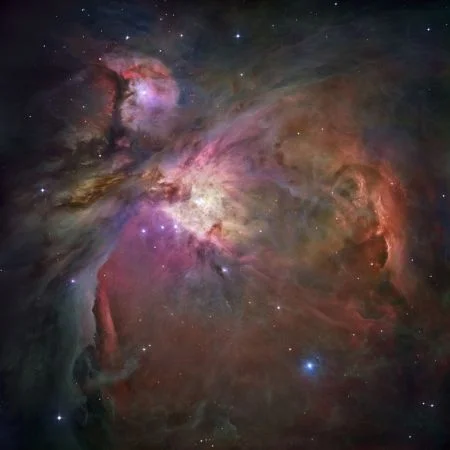My first Astronomy Club meeting was held at a local Village Inn—a classic breakfast-style diner here in the South. The group had reserved a private back room with long tables, a screen, and equipment already set up for the evening’s presentation. The official meeting ran from 5 to 7 PM, though many gathered early for dinner at 4.
I decided to skip the pre-meeting dinner this time—walking into a roomful of strangers already deep in conversation felt like a bit much, especially as an introvert. Maybe next time I’ll summon my courage, emboldened by the advertised promise of loaded hashbrown pancakes.
The Crowd & The Vibe
The back room filled up with a friendly crowd—three or four long tables’ worth of attendees, with a bit of spillover. Most were seasoned stargazers, though there was a younger couple in the mix, newly married and expecting a baby soon.
The vibe was casual and low-pressure, and everyone was kind and welcoming. Still, when I walked in, all eyes seemed to turn my way—I definitely had a deer-in-headlights moment. To top it off, I was the only nerd with a notebook, scribbling away like a cosmic journalist. I let them know I was documenting my astronomy journey, which got a few nods of encouragement. I felt a little self-conscious, but I kept writing. Because that’s what notebook nerds do.
I wasn’t the only newbie in the room—two other women had just joined, and we were all welcomed with mini red LED flashlights as a quirky little welcome gift. The flashlights are reportedly over 15 years old—leftover stock from a retired astronomy supply business—so we were gently advised to replace the batteries and proceed with caution.
Getting to Know the Club
The meeting kicked off with introductions, and right away I knew I was in good company—everyone went around saying their name, and there was a lot of friendly ribbing and inside jokes flying around. Even during introductions, I caught at least three unfamiliar acronyms and a handful of astronomy terms that may as well have been Martian. But it was more charming than intimidating—it just showed how much experience was in the room.
The club is big on outreach, which is actually how I discovered them in the first place—they’d hosted a telescope night right in my neighborhood on April 3. It was here I caught a glimpse of my first fireball—a particularly large meteor. I only saw it for a second before it blazed out, but it left a lasting impression.
Turns out they do a lot of community events, especially with local libraries (cue inner happy dance—I love the library!). They also host Star Parties twice a month out at a fairgrounds location with nice dark skies. The next one’s scheduled for April 26, and I’m already counting down.
They did mention that weather is always a factor—plans are confirmed (or not) via their Facebook page, often close to the event time. Apparently, it’s tricky to navigate the location at night, so newbies are encouraged to arrive before sunset to avoid accidentally blinding everyone with their headlights—a rookie mistake I definitely want to avoid.
There was also a surprisingly lively debate about whether the club is in its 51st or 52nd year. That’s when a member named Skip quietly but authoritatively laid down the law: “The first year is year zero. So if the club is 51 years old, we’re in our 52nd year.” Boom. Debate over. I don’t know who this guy is yet, but he’s a king!
The Meeting Structure
After introductions and club updates, the meeting moved into an educational presentation, followed by a short business meeting. But even in that first half hour, I got a real sense of the club’s energy: passionate, organized, and deeply committed to sharing their love of the night sky.
The educational portion of the meeting was led by Paul, the club’s longtime president—though he mentioned he recently took a year off to recharge his batteries (relatable). It must have worked, because his enthusiasm for the subject is truly boundless.
Good thing, too—because the images in his presentation refused to load, forcing him to attempt to physically act out some of the concepts. The most unforgettable moment of the night: Paul dancing around the room, globe in hand, in an attempt to explain something called the Radiant Effect. A member quipped that Paul must be powered by rocket fuel!
His talk, Meteors 101, gave a great overview for beginners and seasoned stargazers alike. I wrote a separate beginner’s guide based on his presentation if you want to nerd out with me: Read it here ➜
Paul says meteor observing is a great way to learn the sky, practice concentration, and start understanding things like magnitude (mental note: I need to ask what that means).
Honestly, I couldn’t have picked a better meeting to start with. We’re heading out of the doldrums and into fireball season. If those terms are as unfamiliar to you as they were to me, check out my recap of Paul’s stellar presentation.
I left that night feeling both overwhelmed and excited—a little dazzled by acronyms I didn’t understand, but also energized to learn more. This club might just be the perfect launchpad.
Maybe that bright streak I saw on April 3 was a sign that I’m in the right place. Looks like the stars are shooting right into alignment for me and the astronomy club—and I’m here for it.

